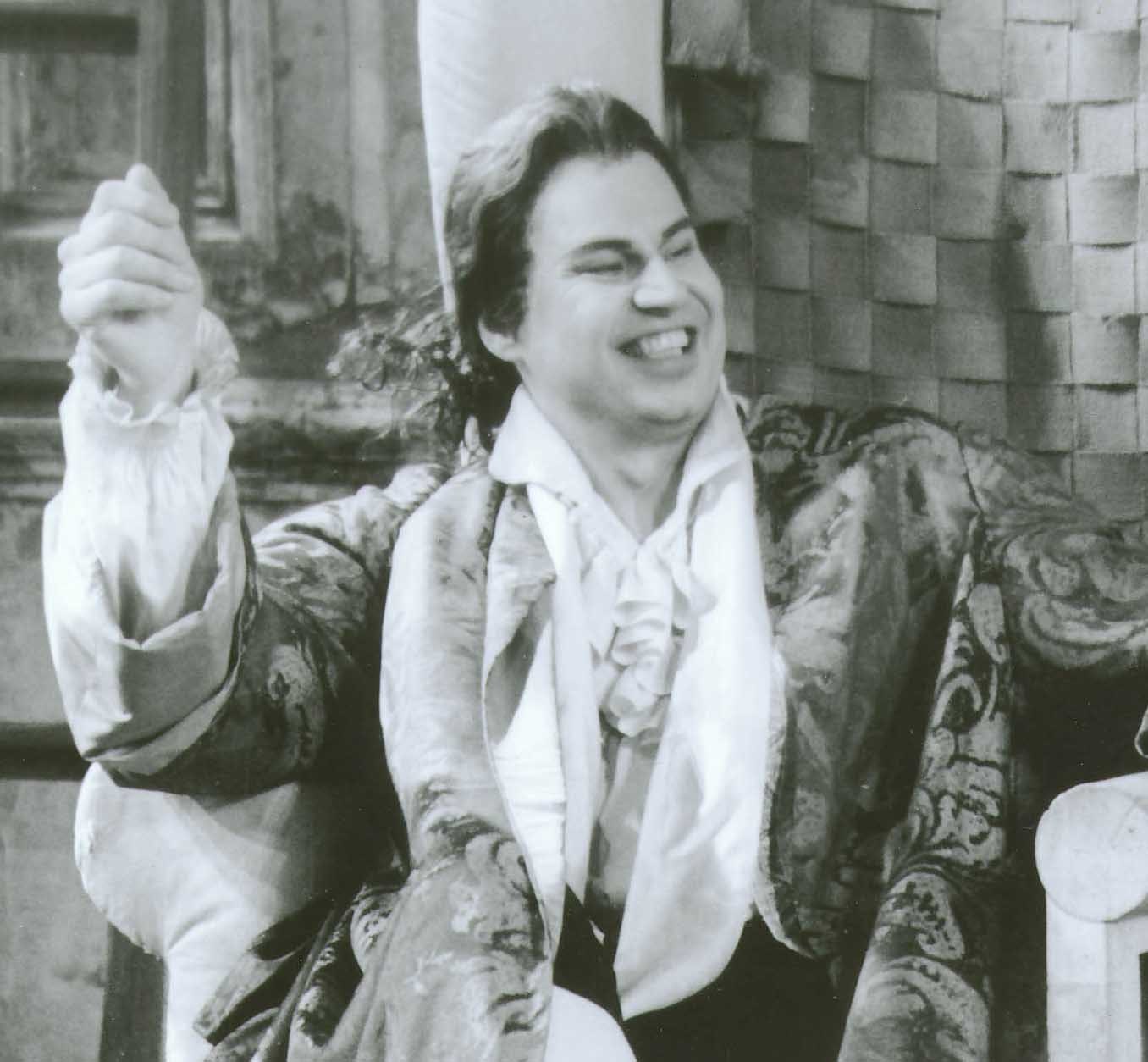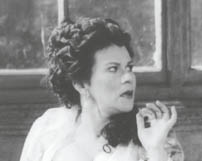Key Word Search
Multi-Field Search
Browse
Repertory Report
Performers Report
Contacts
Met Opera Website
Le Nozze di Figaro
Metropolitan Opera House, Thu, January 24, 2002
Debut : Peter Mattei, Soile Isokoski
Le Nozze di Figaro (392)
Wolfgang Amadeus Mozart | Lorenzo Da Ponte
- Figaro
- Ferruccio Furlanetto
- Susanna
- Korliss Uecker
- Count Almaviva
- Peter Mattei [Debut]
- Countess Almaviva
- Soile Isokoski [Debut]
- Cherubino
- Kristine Jepson
- Dr. Bartolo
- Paul Plishka
- Marcellina
- Wendy White
- Don Basilio
- Michel Sénéchal
- Antonio
- Thomas Hammons
- Barbarina
- Danielle de Niese
- Don Curzio
- Tony Stevenson
- Peasant
- Angela Gilbert
- Peasant
- Reveka Evangelia Mavrovitis
- Conductor
- Donald Runnicles
- Production
- Jonathan Miller
- Set Designer
- Peter J. Davison
- Costume Designer
- James Acheson
- Lighting Designer
- Mark McCullough
- Choreographer
- Terry John Bates
- Stage Director
- Robin Guarino
Le Nozze di Figaro received ten performances this season.
Photographs of Soile Isokoski as Countess Almaviva and Peter Mattei as Count Almaviva by Winnie Klotz / Metropolitan Opera.
Review 1:
Review of Allan Kozinn in The New York Times
Letting “Figaro” Be Itself So Subtlety Can Shine
One of the more refreshing aspects of Jonathan Miller's 1998 staging of Mozart's "Nozze di Figaro," which returned to the Metropolitan Opera on Thursday, is the degree to which it sets aside directorial conceits and lets the opera speak for itself. That isn't to say that this is a work that directors should keep their hands off, or that Mr. Miller's production is a blank slate; far from it. But "Figaro," with the undercurrent of social commentary that survived the translation from the original Beaumarchais play to Lorenzo Da Ponte's libretto, seems to invite updating and magnification of all kinds.
Mr. Miller, too, has been known to tinker with time and place in his opera productions, but in this case he let the singers play the work conventionally, as the layered comedy it is, knowing that its deeper aspects would come through. Robin Guarino, who has taken over the stage direction, has maintained the elegance of this conception. His only signature touch was making the Almaviva manor into a near ruin, with the walls in the Countess's bedroom and the large hall in as dire need of a paint job as the servant’s quarters.
As symbolism goes, that's not much, particularly since the Jean Pierre Ponnelle staging that this production replaced used the same effect. Even so, Peter Davison's sets convey the grandeur of the estate. (The costumes, by James Acheson, are unremarkably traditional.)
One requirement for any "Figaro" production to come to life is a good, balanced ensemble cast, and the Met has assembled a fine one here. Ferruccio Furlanetto, in the title role, contributed the personable portrayal and warm, rounded tone that have made him a reliable, pleasing Figaro in recent seasons. He contributed other nice if subtle touches as well: in Figaro's cavatina, "Si vuol ballare," where the standard translation (including that in the Met titles) renders "il chittarino le suonoro" as "I'll call the tune," Mr. Furlanetto offered a more literal interpretation by strumming an imaginary guitar. Korliss Uecker brought a sweet tone and sharp focus to Susanna, and like Mr. Furlanetto, she overdid the role's comic touches so rarely that when an opportunity presented itself – her manic attempt to get the Countess's attention in the second act, for example — it wasn't lost in a sea of cuteness. She also contributed a beautifully flowing account of "Deh vieni, non tardar" in the last act. Kristine Jepson was a persuasively boyish Cherubino and gave ardent accounts of her two showpieces, "Non so più" and "Vol che sapete."
There were two house debuts: Peter Mattei, a Swedish baritone, was the Count, and Soile Isokoski, a soprano from Finland, was the Countess. Mr. Mattel is solid and secure vocally and has a winning smile and easy manner that made the Count seem less imperious and more likable than he is often portrayed. But he avoided letting this approach undercut the absurdity of the Count's position at the end of the opera, when he is forced to beg the Countess's forgiveness. Ms. Isokoski, similarly, touched on the Countess's sense of abandonment by the Count without diminishing her regal bearing or the graceful humor she must contribute to the second act. And her dark, burnished soprano should make her a good addition to the Met roster.
Paul Plishka (as Don Bartolo), Wendy White (as Marcellina), Danielle de Niese (as Barbarina), Thomas Hammons (as Antonio) and Michel Sénéchal (as Don Basilio) gave solid portrayals. The production benefited from the spirited support of the orchestra, which Donald Runnicles conducted vigorously and with admirable attention to the niceties of Mozart's wind and string balances.
Search by season: 2001-02
Search by title: Le Nozze di Figaro,
Met careers
- Donald Runnicles [Conductor]
- Ferruccio Furlanetto [Figaro]
- Korliss Uecker [Susanna]
- Peter Mattei [Count Almaviva]
- Soile Isokoski [Countess Almaviva]
- Kristine Jepson [Cherubino]
- Paul Plishka [Dr. Bartolo]
- Wendy White [Marcellina]
- Michel Sénéchal [Don Basilio]
- Thomas Hammons [Antonio]
- Danielle de Niese [Barbarina]
- Tony Stevenson [Don Curzio]
- Angela Gilbert [Peasant]
- Reveka Evangelia Mavrovitis [Peasant]
- Jonathan Miller [Production]
- Robin Guarino [Stage Director]
- Terry John Bates [Choreographer]
- Peter J. Davison [Set Designer]
- James Acheson [Costume Designer]
- Mark McCullough [Lighting Designer]

